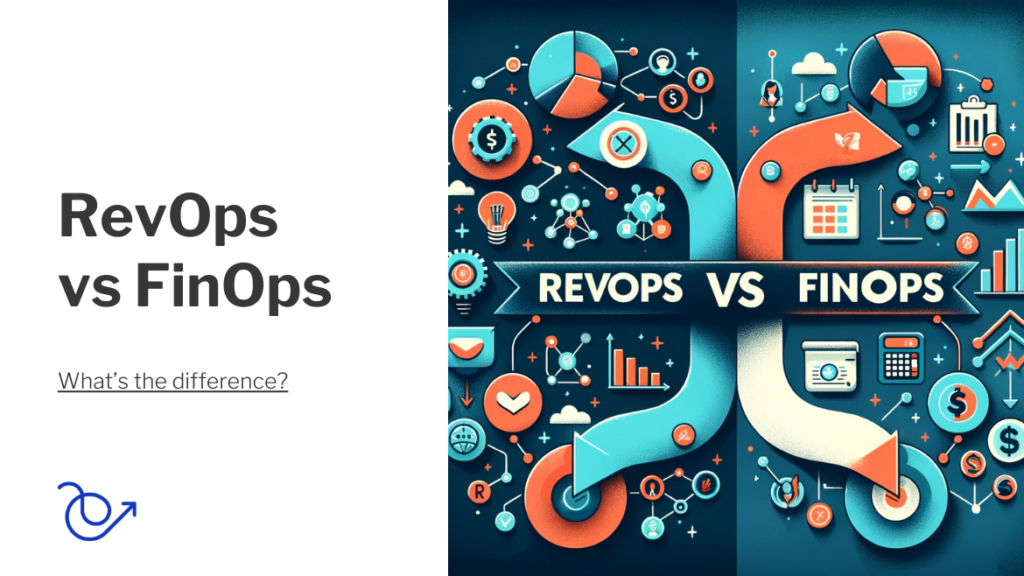We have worked in B2B SaaS long enough to know what the entrepreneurs know about, and what drives them clueless.
Ever since revenue operations and FinOps have come into picture, there’s this one thing they have been confused and misunderstood about is, RevOps vs FinOps – is there any difference?
While both play pivotal roles in driving business efficiency and growth, we are here to share the difference between both.
This blog aims to delineate RevOps and FinOps, exploring their roles, differences, and intersections in the context of a B2B SaaS business.
Role of RevOps in B2B SaaS
RevOps is a strategic, holistic approach that aligns sales, marketing, and customer success teams. Its core objective is to drive revenue growth through better alignment of these teams.
Key functions of RevOps include:
- Streamlining the sales process and eliminating silos between departments.
- Implementing and managing sales and marketing technologies.
- Optimizing lead generation, conversion rates, and customer lifecycle management.
- Providing analytics and insights to support strategic decision-making.
Role of FinOps in B2B SaaS
FinOps, or Financial Operations on the other hand, is centered around the strategic management of a company’s financial resources.
In a B2B SaaS context, FinOps focuses on:
- Budgeting, forecasting, and financial planning.
- Managing cash flow, expenses, and cost optimization.
- Pricing strategies and revenue recognition in line with SaaS models.
- Financial compliance, risk management, and reporting.
RevOps vs FinOps: Difference Between Both Operations in B2B SaaS
While RevOps and FinOps overlap in their ultimate goal of boosting the company’s financial health (though I think all business operations do that), they differ in their primary focus and operational approach.
- Scope of Work: RevOps concentrates on optimizing revenue streams by aligning marketing, sales, and customer service, whereas FinOps is more focused on the efficient management of financial resources and operations.
RevOps is more operationally focused on the front-end processes that lead to revenue generation, while FinOps deals with broader financial management and strategy.
- Focus Area: RevOps emphasizes enhancing the entire customer journey, from initial engagement through post-sales support, to maximize revenue potential. FinOps is more concerned with maintaining the overall financial health of the company and ensuring compliance with financial regulations.
While both are strategic, RevOps tends to be more hands-on with day-to-day operational processes, whereas FinOps takes a higher-level strategic approach to financial management.
- Tools and Systems: RevOps often employs CRM and sales enablement and analytics tools to streamline processes and improve customer interactions. FinOps, on the other hand, relies on accounting and financial software and tools for budgeting, forecasting, and financial analysis.
- Metrics and KPIs: RevOps tracks metrics like lead conversion rates, customer acquisition costs, and customer lifetime value which are focused on growth. Check out some RevOps KPIs here. On the other hand, FinOps focuses on metrics such as cash flow, profit margins, and cost of revenue which are pertinent with financial stability.
To summarize RevOps vs FinOps, central to RevOps is empowering the sales and marketing efforts with necessary insights to streamline operations in order to improve conversion rates and revenue growth.
On the other hand, a significant part of FinOps is managing operational costs, identifying areas for cost reduction, and optimizing spend. It involves detailed financial planning, budgeting, and analysis to forecast future financial scenarios and guide business decisions.
Do RevOps and FinOps Intersect Anywhere? If Yes, How?
Despite their differences, RevOps and FinOps intersect in several areas:
- Strategic Planning: Both operations contribute to the overall strategic planning of the business, ensuring that revenue strategies are financially viable and that financial plans are aligned with market opportunities.
- Data Sharing: The insights and data analytics from RevOps can inform FinOps about market trends and customer behavior, aiding in more accurate financial forecasting and budgeting.
- Pricing Strategies: RevOps’ understanding of customer preferences and market dynamics can influence FinOps’ pricing strategies and models, ensuring they are competitive and profitable.
Conclusion
In summary, RevOps vs FinOps in a B2B SaaS environment, while distinct in their focus and methodologies, are complementary. RevOps drives revenue through strategic alignment of key business functions, whereas FinOps ensures financial health through effective management of financial resources. Their intersection points are crucial for the holistic growth and sustainability of a SaaS business, making them indispensable to each other in achieving the overarching business objectives.
Understanding and leveraging the synergy between RevOps and FinOps can lead to more informed decision-making, enhanced operational efficiency, and ultimately, a stronger, more competitive business.
